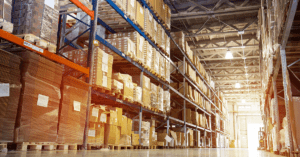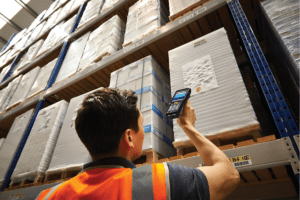Why Sustainable Packaging Matters

Corporate stewardship is not only expected but celebrated. Companies are proudly promoting their sustainability goals to signal that they are doing their part to protect the environment.
Packaging is at the center of the conversation with companies taking a hard look at the way their products are packed and shipped. The materials and products they choose to use in their packaging operation have a direct effect on sustainability.
That’s why transitioning to eco-friendly packaging has become a top priority for many leading retailers, manufacturers, and e-commerce companies.
Read on to discover why sustainable packaging matters now more than ever.
Why Sustainable Packaging and Why Now?
Increased Consumer Demand
One of the main reasons companies are prioritizing sustainable packaging is that their customers are demanding it.
Over the past several years, e-commerce has grown to become one of the primary ways people shop, and many believe that COVID accelerated the trend.
During periods of quarantine, online ordering and home deliveries increased and with it, the amount of packaging customers had to dispose of. Consumers have had to face the waste and the impact of their consumption on the environment.
Modern customers demand that packaging and shipping materials used in the products they buy align with their personal beliefs about sustainability. They also care about the convenience that comes with sustainable packaging, preferring materials that are easily recycled or disposed of in an eco-friendly manner.
Consumers have spoken and leading companies are listening. Many organizations not only have stated sustainability initiatives but feature their green goals in their marketing campaigns to signal to potential customers that they share the same values about protecting the environment.
New Government Mandates and Bans
Government leaders and agencies are also joining the cause to switch to more eco-friendly packaging and driving adoption through legislation.
New York City was one of the first to take action with a ban on Styrofoam packaging. Since then, other major cities, including San Diego, Miami Beach, Seattle, and Washington, DC, have enacted similar laws.
Legislative support for sustainability has only grown in the past few years. One notable example was California Assembly Bill-793 which passed in 2020 and requires that 50% of plastic beverage bottles use post-consumer recycled content by 2030.
Supply Shortages and Price Hikes
Another unexpected factor that sparked interest in sustainability packaging was the recent supply shortages and price increases felt across the industry.
High costs and low supply drove business leaders to switch to alternative packaging products which opened the door for many companies to explore greener options.
Why Packaging is Essential to Your Sustainability Strategy
Of course, packaging is only one part of the larger vision of sustainability, but many companies are making packaging a key part of their green initiatives for several reasons.
First, there are a variety of packaging products available with high recyclability and sustainable properties, so switching to eco-friendly packaging is often consider low-hanging fruit for companies that are looking for a quick win in their sustainability plan.
The plethora of options available gives you the flexibility to switch to sustainable alternatives without necessarily having to sacrifice quality.
Second, implementing an environmentally-conscious packaging strategy clearly demonstrates the company’s commitment to sustainability. Customers experience packaging firsthand when they order your products so it’s a tangible example of how your company is aligned with their desire for sustainable practices.
Third, there are tangible cost savings from reducing waste that benefit the bottom line while meeting their sustainability requirements, particularly when you look at the total cost of ownership.
Plus, new ground-breaking products are being introduced to the markets, giving business leaders more cost-effective ways to go green than previously possible.
Sustainable Packaging Examples across Industries
While some industries have a stronger focus, the trend of sustainable packaging isn’t limited to one sector. We’re seeing businesses across industries embrace eco-friendly packaging, and the trend is only gaining steam.
E-Commerce
E-commerce is one of the fastest-growing markets for sustainable packaging, particularly because of the increase in in-home delivery and demand for curbside recyclable shipping materials.
One of the most notable applications from a major e-retailer is Amazon’s adaption of recyclable mailers. Given the volume of deliveries from Amazon, the impact of switching to a greener alternative will be significant to both the environment and to the industry as other retailers will likely follow Amazon’s lead in embracing recyclable packaging.
3PLs
Related to e-commerce, third-party logistics companies (3PLs) have also quickly adapted to the boost in demand in sustainable packaging. Many of the 3PL’s customers leverage them for e-commerce fulfillment so utilizing recyclable packaging materials is impearative to their business.
Retail
Many retailers have committed to packaging that aligns with sustainability, from small boutiques to large conglomerates.
One high-profile example of this commitment is the Beyond the Bag Initiative started by a consortium including CVS Health, Target, and Walmart. This project is incentivizing innovations in packaging to produce a more environmentally-friendly retail bag.
Since its founding, the Consortium has been joined by other retail partners including DICK’S Sporting Goods, Dollar General, The Kroger Co., The TJX Companies, Inc., Ahold Delhaize USA Brands, Albertsons Companies, Hy-Vee, Meijer, Wakefern Food Corp., and Walgreens, and more.
Food & Beverage
In light of Styrofoam bans in major cities, restaurants and fast-food chains have had to rethink their approach to packaging. Some are taking it a step further and embracing the vision of sustainability and the circular economy.
For example, McDonald’s has committed to switching to renewable or recyclable packaging materials by 2025.
Food and beverage producers are also searching for innovations to allow their products to be packaged in a more environmentally-friendly way. Pepsi, for instance, recently announced plans to develop a 100% recyclable paper bottle.
Consumer Goods
Many consumer goods companies have started to migrate their product packaging to greener version the traditional packaging materials.
Proctor and Gamble (P&G) states that “73% of [its] consumer packaging is recyclable or reusable” with plans to aim for closer to 100% recyclable or reusable consumer packaging.
Life Sciences & Pharmaceuticals
An especially exciting area of growth for sustainable packaging is in the life sciences sector. More patients are opting to have their medications shipped directly to their home vs. picking them up at a pharmacy. For some medications, this requires specialized cold chain packaging if the drug needs to be temperature-controlled during shipping.
In the past, cold chain packaging options were limited and often not very eco-friendly. But new curbside recyclable solutions featuring corrugated boxes and insulated liners, make it possible to protect temperature-sensitive products more sustainably.
One company leveraging this new technology, Illumina, stated recyclable alternatives to EPS coolers will help them “divert almost 250,000 cubic feet of foam packaging from landfills and avoid the carbon emission equivalent of taking more than 100 cars off the road for a full year.”
Manufacturing
Corrugated packaging (including partitions or inserts) can be designed to offer bracing and cushioning. Paper-based dunnage and cushioning solutions are often used to as a more sustainable alternative to foam void fill used by some manufacturers.
Eliminate Waste While Decreasing Costs
In addition to the benefit to the environment, there are tangible cost savings and positive business outcomes that can result from sustainable
Reduce Total Cost of Ownership (TCO)
For years, one of the biggest obstacles to sustainable packaging was the expectation of higher costs. Many still think sustainable packaging is too expensive compared to less environmentally friendly solutions, however, if you analyze the total cost of ownership this is not always true. Look at the packaging process holistically to really understand how your budget will be affected.
For example, if we compare foam (EPS) coolers traditionally used for cold chain shipping vs. new recyclable solutions featuring insulated liners and corrugated boxes. The sustainable packaging solution often times can be shipped flat (as the insulation is 2-piece pad sets) resulting in 30-50% more product packed per pallet or full truckload. With increasing transportation costs, this can be a substantial reduction in per piece shipping costs. Similarly, you will also be able to reduce the amount of warehouse storage space for the packaging resulting in lower costs or more days of inventory per allocated storage area.
The HIdden Cost of Not being Sustainable
One factor that’s often overlooked is the competitive advantage (and the revenue associated) with sustainability.
As noted before, consumer pressure is driving companies to embrace recyclable alternatives and implement more eco-friendly practices to keep customers’ business. Organizations who don’t respond to these consumer demands run the risk of being displaced by competitors who are effective in capitalizing on them.
Many companies are finding it’s worth investing in sustainable packaging to demonstrate to their customer base that they share the same values, to build stronger brand loyalty, and to protect against new competitive threats.
Assessing the Full Cost of Sustainable Packaging
A packaging specialist like those at Crown Packaging can help you assess your entire packaging process to uncover expenses that inflate your TCO and find cheaper, greener options that protect the environment while protecting your bottom line.
Crown Packaging | Your Sustainable Packaging Partner

One of the advantages of working with Crown Packaging is the depth of our supplier network which allows us to provide a wide range of solutions.
We deliver products from top manufacturers in multiple categories (from boxes and bags, to tape and stretch film, void fill and dunnage, and everything in between) made from a variety of materials.
So, with Crown, you can explore different types of packaging and choose the solution that works best for your business.
And because we’re a single source for many categories of products we can help you take a holistic approach to sustainable packaging, identifying improvements at every stage of your packaging process.
Our packaging specialists are there to introduce you to new innovations so you have access to the best solutions.
Consider Crown Packaging your sustainable packaging partner and reach out to your local representative to help you with your transition to more sustainable packaging.




